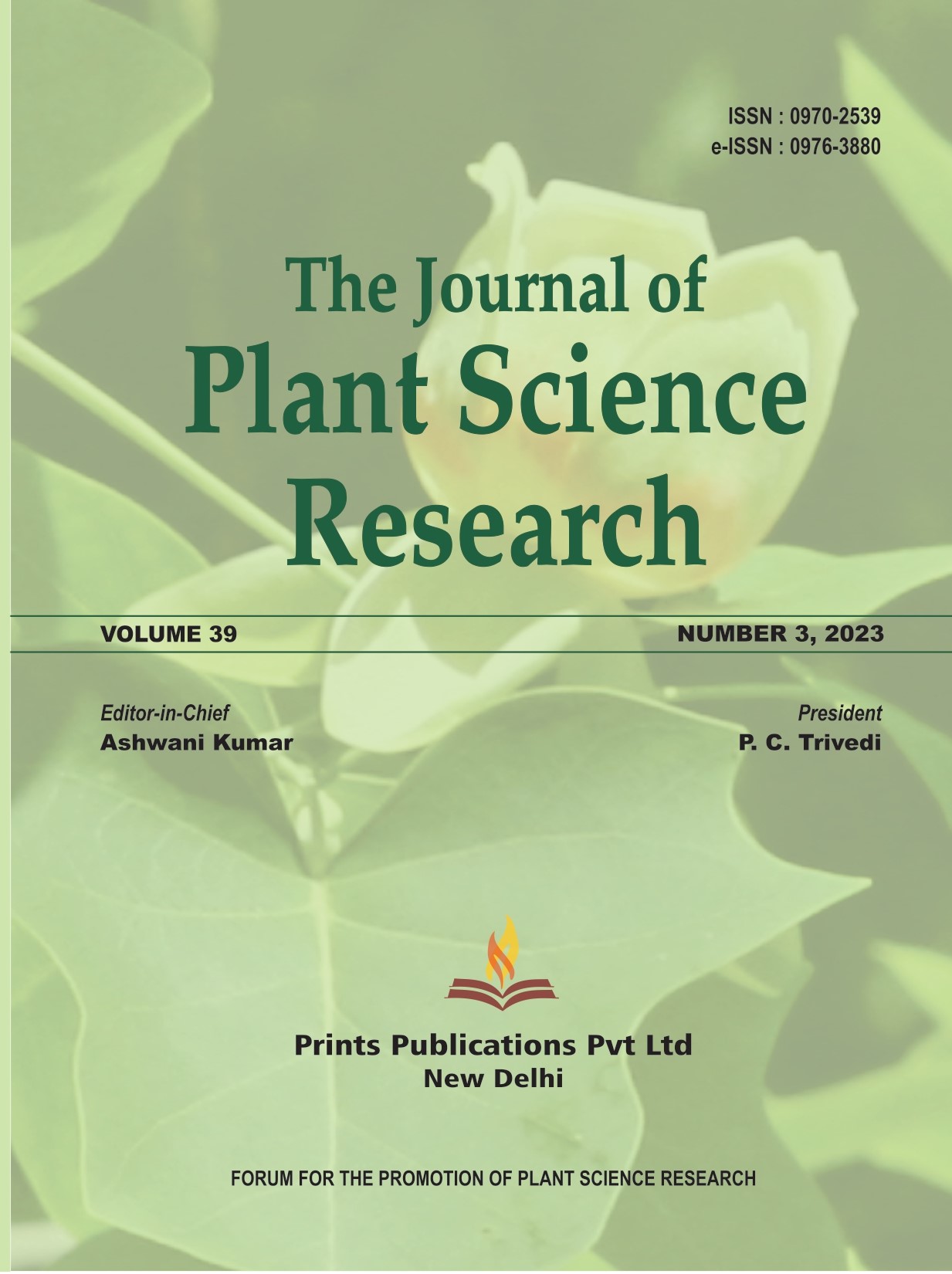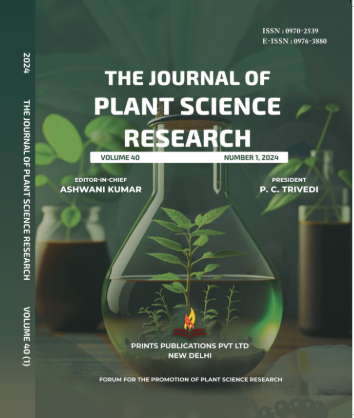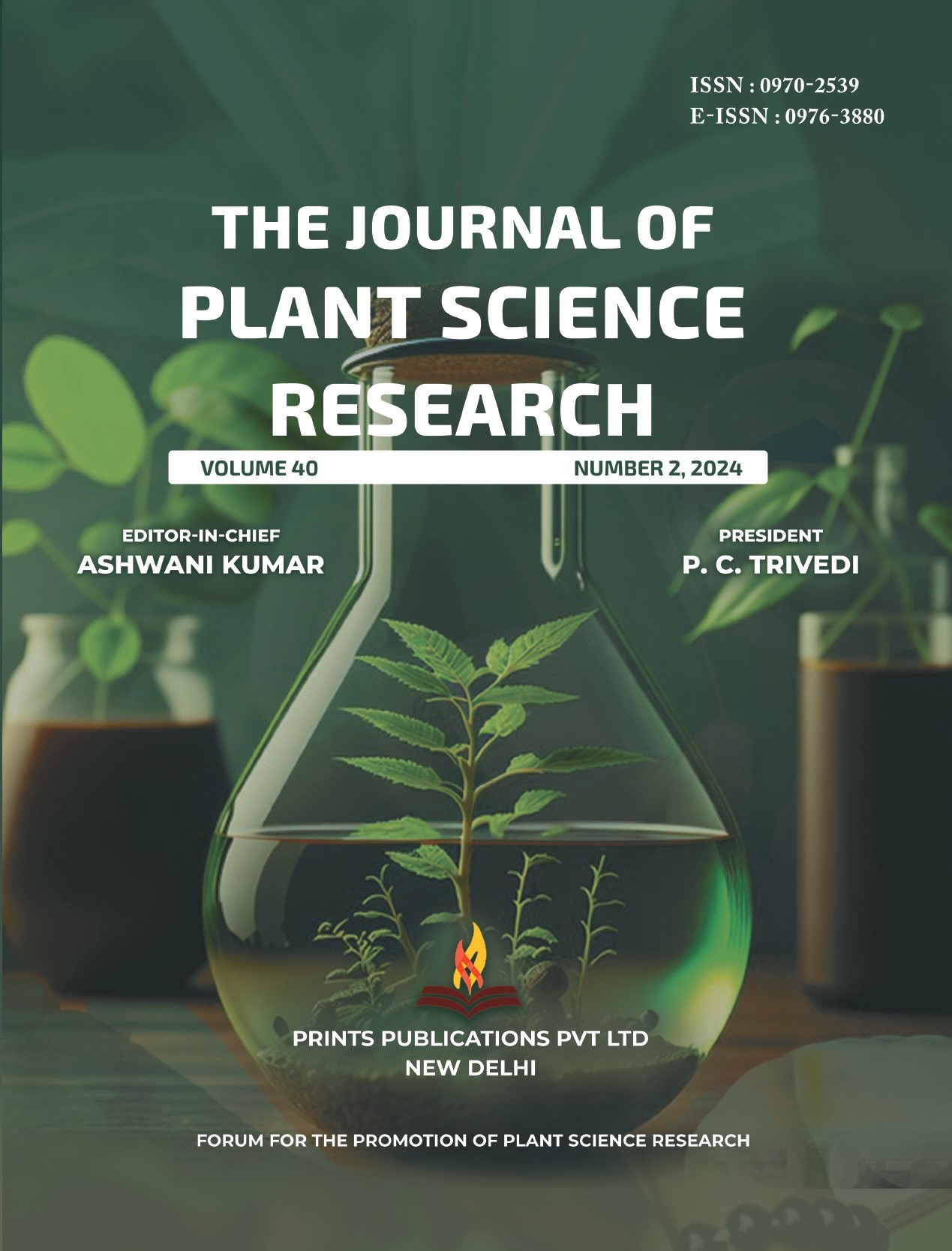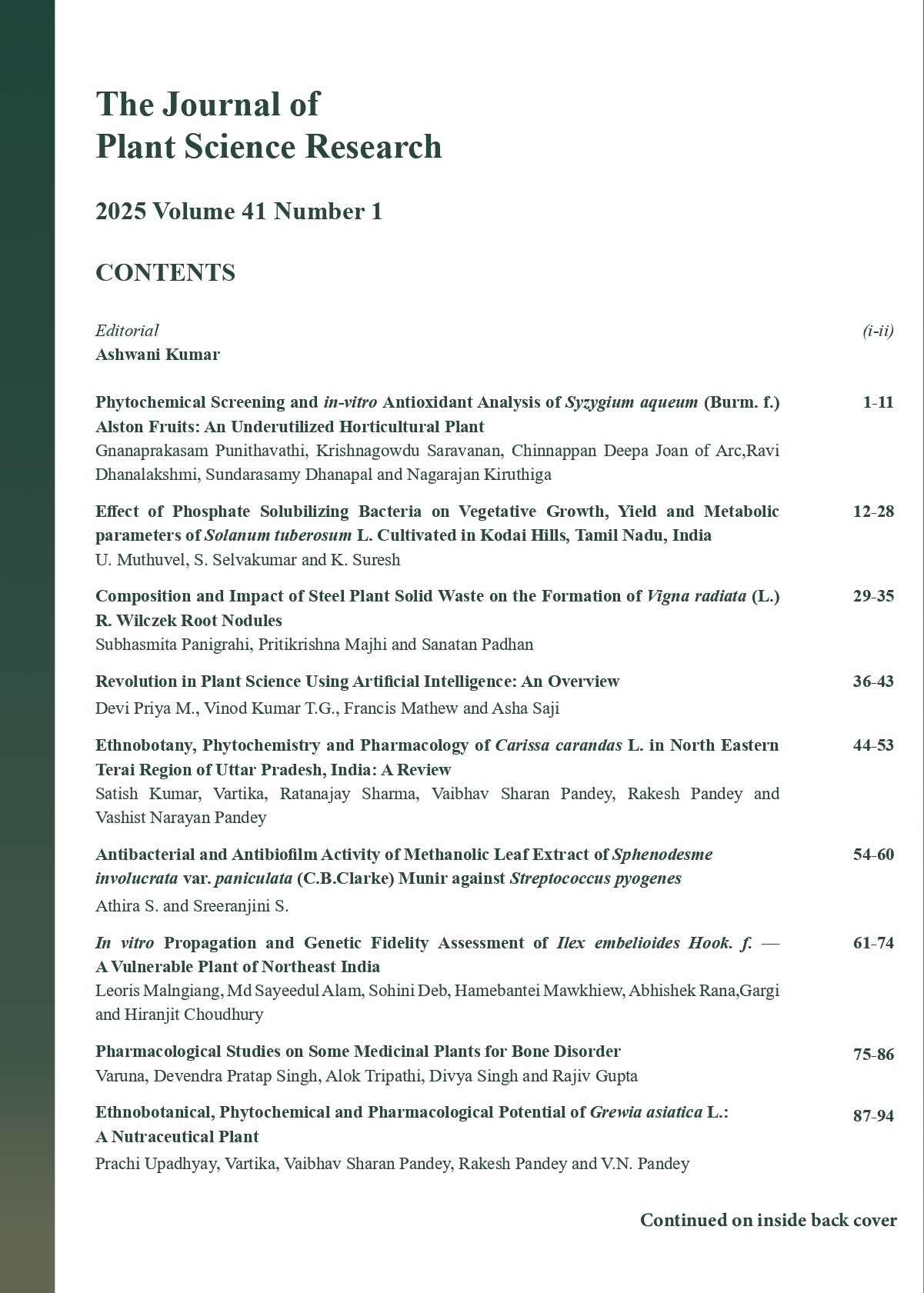The Journal of Plant Science Research - A UGC Care-Listed Journal
Published in Association with Forum For the Promotion of Plant Science Research
Current Volume: 41 (2025 )
ISSN: 0970-2539
e-ISSN: 0976-3880
Periodicity: Tri-annual
Month(s) of Publication: April, August & December
Subject: Botany
DOI: 10.32381/JPSR
Online Access is Free for Life Member
The Role of Silicon to Increase Salt Tolerance in Red and White Varieties of Bean (Phaseolus vulgaris L.)
By : Hadi Nosrati, Parto Roshandel, Abdo-rahman Mohamadkhani
Page No: 81-90
Abstract
Silicon (Si) application is recently considered as a way to increase salt tolerance in crop plants. In the present study the effect of Si has been investigated in two varieties of Phaseolus vulgaris (red and white bean) subjected to salinity. 10-day-old seedlings of red and white beans were introduced to the treatments including: control, NaCl (50 mM), Si (0.5 or 1 mM) +NaCl (50 mM) over 4 weeks in the green house. After one month, the harvested plants were analyzed for dry weights of shoots and roots, total chlorophyll content, relative water content and electrolyte leakage of leaves, shoot and root Na+ and K+ concentrations. The results indicated salt stress significantly decreased the above parameters (p<0.05). Red bean plant was more sensitive (108% reduction in the biomass) to salt stress in comparison to white bean plant (72% decline in the biomass). The ameliorating effects of different levels of Si (0.5 or 1 mM) were significant (p<0.05) under salinity, and in some cases these effects were greater at Si 1 mM in comparison to 0.5 mM. Under salinity, the promotion effects of Si on biomass were more evident for the sensitive line- red bean (55% increment in comparison to salt stress alone) than that of in white bean. Data analysis of the current study suggests that Si increases salt tolerance in red bean by relatively blocking Na+ entrance but increasing of K+ maintenance in the shoots, increasing of relative water content and decreasing of electrolyte leakage in the leaves. More details are expressed and discussed in this paper.
Authors :
Hadi Nosrati : Post-graduate student, Biology Department, Faculty of Sciences, Shahrekord University
Parto Roshandel : Assistant Professor, Biology Department, Faculty of Sciences, Shahrekord University
Abdo-rahman Mohamadkhani : Assistant Professor, Horticulture Department, Faculty of Agriculture, Shahrekord University






